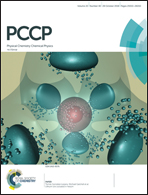A computational approach to interface engineering of lead-free CH3NH3SnI3 highly-efficient perovskite solar cells
Abstract
Perovskite solar cells (PSCs) based on organic–inorganic metal halide perovskites are a recent ground-breaking advancement in attaining power conversion efficiencies exceeding 21%. However, the toxicity of lead in these PSCs could be a deterrent for large-scale development due to the environmental concerns. The methylammonium tin triiodide (CH3NH3SnI3) perovskite has been successfully employed in lead-free PSCs as an alternative to CH3NH3PbI3 perovskite. The PSCs have mostly been realized with a highly expensive spiro-OMeTAD hole-transporting material (HTM). Herein, copper thiocyanate (CuSCN) was implemented as a HTM instead of the highly expensive spiro-OMeTAD counterpart. The results show that CuSCN is a promising HTM for the lead-free CH3NH3SnI3-based PSCs. We investigated and optimized the parameters of the lead-free CH3NH3SnI3-based PSCs with the CuSCN HTM. The simulated device shows a power conversion efficiency exceeding 26% under AM 1.5G illumination and an absorption onset up to 1080 nm. The reported CH3NH3SnI3-based PSCs provide a viable path to the realization of environmentally benign, low-cost, and high-efficiency PSCs.



 Please wait while we load your content...
Please wait while we load your content...